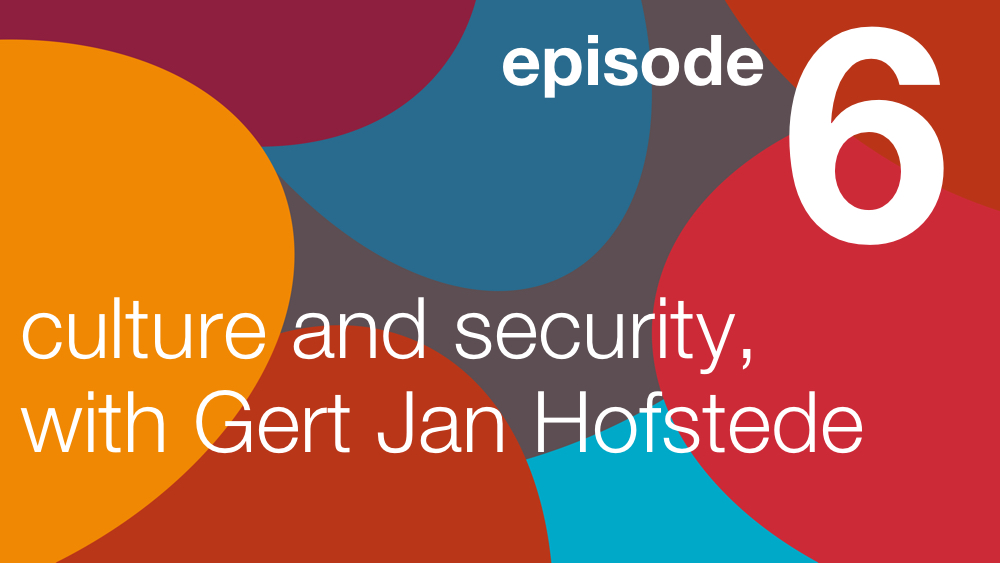
Culture and Security, with Gert Jan Hofstede
The relationship between culture and security is an important one and one that is discussed a lot. Unfortunately, many people miss the point somewhat when exploring culture and security. The obvious place to start is the security culture within an organisation, but let’s not dismiss organisational culture too quickly. Better still, let’s also take a look at industry culture and national culture. So you see, when we start looking at culture and security, there’s more to it than we might initially assume. So we thought this would make an excellent podcast episode.
Today, Bruce is joined by Gert Jan Hofstede. Gert Jan is a population biologist and social scientist hailing from the Netherlands whose research and publications have provided many with deeper understanding in the areas of cultural evolution, societal change, cultural stability, and how those forces interact with and have influence upon one another. He is also known for his work in social simulation as well as for a number of books he has co-written with his father, Geert Hofstede. In this episode, Bruce and Gert Jan discuss a wide variety of organization and culture-related topics that have important implications for the Cyber Security industry.
“It is as if you were a fish and they asked you to describe the air… If you’ve always lived in one place in the world, then it’s very hard for you to see that behaviors from another place that seem strange, illegal, ridiculous… that those behaviors can make sense, but within a larger [cultural] system.”
Join Bruce and Gert Jan in this episode of Re-thinking the Human Factor as they explore:
- How awareness of cultural differences (or lack thereof) can be an opportunity for greater collaboration between groups, or greater friction, and how this awareness contributes to one’s ability to understand and effectively communicate cross-culturally
- The need for organizations to achieve a sense of mutual cultural understanding as the starting place for implementing organizational change rather than striving to achieve cultural homogenization as the means for implementing that change
- Different perceptions of what cultural differences mean to an organization (barrier to progress, a catalyst for a breakthrough, etc.), and the importance of realizing that these differences do exist so that one can begin to try and understand them as a means of navigating the challenges and growth potential afforded by these differences
- The importance that “cultural ambassadors” within an organization be, first and foremost, acceptable to the cultural audience whom they seek to address
- 4 helpful cultural metaphors to help with navigating cross-cultural organizational communication:
- The Family (Asia and Africa)
- The Machine (Germanic/Northern Italy type of region)
- The Market (Anglo-Saxon, the UK and North America)
- The Pyramid (the Mediterranean and Slavic countries)
MORE ABOUT GERT JAN HOFSTEDE, HIS BOOKS, AND HIS RESEARCH:
Associate Professor at the Information Technology Group at Wageningen University & Research // Population biologist and social scientist in information management and social simulation // Interested in the interplay of the contrasting forces of cultural evolution, societal change and cultural stability.
